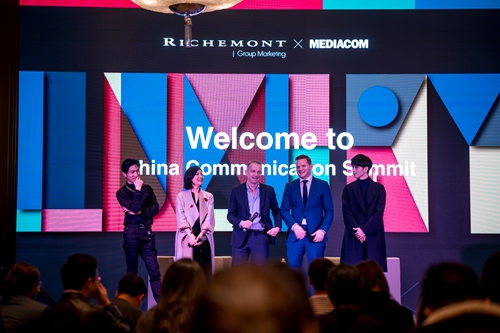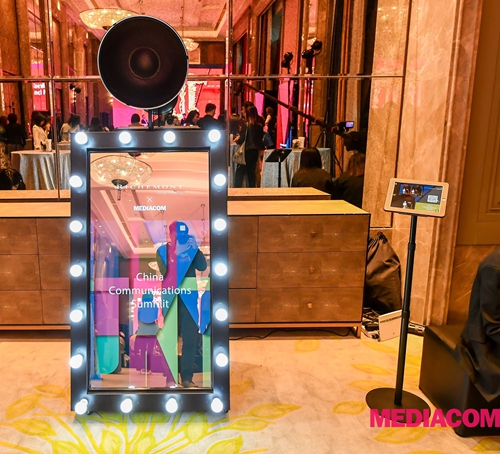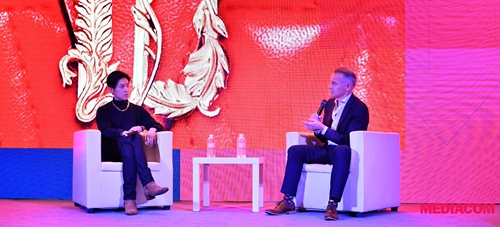HOME >> METRO SHANGHAI
Luxury consumption sees growth in China
Source:Global Times Published: 2019/11/27 15:33:40
The luxury brand consumption in China is thriving, according to the BLINK report released by global media agency MediaCom at a communication summit it cohosted with Swiss luxury group Richemont recently in Shanghai.
More than 100 guests were invited to the event to explore what makes luxury audiences tick on social media and how key opinion leaders (KOLs) can help consumers to connect with luxury brands in the digital realm.
Rupert McPetrie, CEO of MediaCom China finds the luxury market in China is fascinating at the moment and has unique characteristics. "The rate of growth in China is still very fast for luxuries compared to the rest of the world," McPetrie said.
Featured by its exclusivity, luxury goods are changing from a sign of wealth into something much more rich and interesting. They are no longer just vehicles of projecting wealth but are now projecting identity, the MediaCom report reads.
This change gives luxury businesses opportunities to tell their stories to consumers. Social media then provides an environment where brands can speak and consumers can listen and get more engaged.
According to the China Luxury Report 2019 released by consulting firm McKinsey, more than 90 percent of respondents received information socially such as through KOLs and word-of-mouth. Purchases are even happening directly on social platforms, such as mini-program pop-up stores in WeChat.
Use resources in a right way
McPetrie believes that social outreach is important for luxury brands. Social media keeps evolving every day with new platforms coming and the way of using influencers constantly changing.
In this environment, using resources in an effective way and finding the right KOL becomes critical for luxury brands.
According to McPetrie, the number of followers and capability of driving traffic are not the only standards for finding the right influencer.
"It's much richer, about the levels of engagement with those followers and about the relevance of those followers," he said.
It also depends on the requirements and goals of luxury businesses. "Luxury brands need to establish first what the business challenge is, and that will then lead in a number of directions from a KOL choice and then establish how precise the target that they want to reach," he noted.
For some businesses, if their business challenge is to gain awareness and build reputation, they would probably look at one of the traditional, first-tier KOLs with millions of followers. When it becomes more about sales and conversion, they should target the niche KOLs, or key community leaders (KCLs) to reach core target audiences and ignite engagement in specific categories, according to McPetrie.
Adapt to local reality
Global businesses that want to grow in China have similar challenges. McPetrie thinks that luxury brands should respect local culture and adapt to local reality.
"You cannot assume that what worked in the UK, or France, or the US, or Germany will work in China, because it's different," he said.
McPetrie values local insight and the way that brands adapt. "You need insight into consumers and culture. And that's not just about what communicating works well, it's also about understanding what doesn't work well, what offends, what is negative," he said.
As heavy users of social platforms, millennial and Generation Z now exhibit high investment in luxury brands. A June press release on luxury economy by Bain & Company mentions that "Chinese Generation Z is 'the segment to watch.' They will have significant spending force as proud, empowered and impulsive buyers."
According to McPetrie, millennials and Generation Z are expected to make 46 percent of all luxury purchases by 2025 in China. He holds that the message that a luxury brand would give to a Generation Z consumer is very different from the message it would give to an older customer.
"So, it's not just cross-culture, it's cross-generation, which adds further complexity," he said, insisting that doing the research, understanding the market and the opportunity are of great importance.
McPetrie sees that despite uncertainties in all markets around the world, luxury still stands out as a resilient sector that has strength because luxury products stay valuable and get more valuable over time.
According to a report released by Bain & Company in January 2019, Chinese consumers led the positive growth trend in luxury market in 2018, with a 33 percent share of global luxury spending (up from 32 percent in 2017).
By 2025, Chinese consumers will account for 46 percent of the global luxury market (up from 33 percent in 2018), and they will make half of their purchases at home in China (up from 24 percent in 2017).
"There's a lot of promise in the Chinese luxury market," McPetrie said.
More than 100 guests were invited to the event to explore what makes luxury audiences tick on social media and how key opinion leaders (KOLs) can help consumers to connect with luxury brands in the digital realm.
Rupert McPetrie, CEO of MediaCom China finds the luxury market in China is fascinating at the moment and has unique characteristics. "The rate of growth in China is still very fast for luxuries compared to the rest of the world," McPetrie said.
Featured by its exclusivity, luxury goods are changing from a sign of wealth into something much more rich and interesting. They are no longer just vehicles of projecting wealth but are now projecting identity, the MediaCom report reads.
This change gives luxury businesses opportunities to tell their stories to consumers. Social media then provides an environment where brands can speak and consumers can listen and get more engaged.
According to the China Luxury Report 2019 released by consulting firm McKinsey, more than 90 percent of respondents received information socially such as through KOLs and word-of-mouth. Purchases are even happening directly on social platforms, such as mini-program pop-up stores in WeChat.
Use resources in a right way
McPetrie believes that social outreach is important for luxury brands. Social media keeps evolving every day with new platforms coming and the way of using influencers constantly changing.
In this environment, using resources in an effective way and finding the right KOL becomes critical for luxury brands.
According to McPetrie, the number of followers and capability of driving traffic are not the only standards for finding the right influencer.
"It's much richer, about the levels of engagement with those followers and about the relevance of those followers," he said.
It also depends on the requirements and goals of luxury businesses. "Luxury brands need to establish first what the business challenge is, and that will then lead in a number of directions from a KOL choice and then establish how precise the target that they want to reach," he noted.
For some businesses, if their business challenge is to gain awareness and build reputation, they would probably look at one of the traditional, first-tier KOLs with millions of followers. When it becomes more about sales and conversion, they should target the niche KOLs, or key community leaders (KCLs) to reach core target audiences and ignite engagement in specific categories, according to McPetrie.
Adapt to local reality
Global businesses that want to grow in China have similar challenges. McPetrie thinks that luxury brands should respect local culture and adapt to local reality.
"You cannot assume that what worked in the UK, or France, or the US, or Germany will work in China, because it's different," he said.
McPetrie values local insight and the way that brands adapt. "You need insight into consumers and culture. And that's not just about what communicating works well, it's also about understanding what doesn't work well, what offends, what is negative," he said.
As heavy users of social platforms, millennial and Generation Z now exhibit high investment in luxury brands. A June press release on luxury economy by Bain & Company mentions that "Chinese Generation Z is 'the segment to watch.' They will have significant spending force as proud, empowered and impulsive buyers."
According to McPetrie, millennials and Generation Z are expected to make 46 percent of all luxury purchases by 2025 in China. He holds that the message that a luxury brand would give to a Generation Z consumer is very different from the message it would give to an older customer.
"So, it's not just cross-culture, it's cross-generation, which adds further complexity," he said, insisting that doing the research, understanding the market and the opportunity are of great importance.
McPetrie sees that despite uncertainties in all markets around the world, luxury still stands out as a resilient sector that has strength because luxury products stay valuable and get more valuable over time.
According to a report released by Bain & Company in January 2019, Chinese consumers led the positive growth trend in luxury market in 2018, with a 33 percent share of global luxury spending (up from 32 percent in 2017).
By 2025, Chinese consumers will account for 46 percent of the global luxury market (up from 33 percent in 2018), and they will make half of their purchases at home in China (up from 24 percent in 2017).
"There's a lot of promise in the Chinese luxury market," McPetrie said.

Rupert McPetrie (center), CEO of MediaCom China, and guests interact with the audience at the summit.

An interactive installation at the event

McPetrie (right) talks with Victor Ma, a post-95 singer, at the event. Photos: Courtesy of MediaCom China
Posted in: METRO SHANGHAI